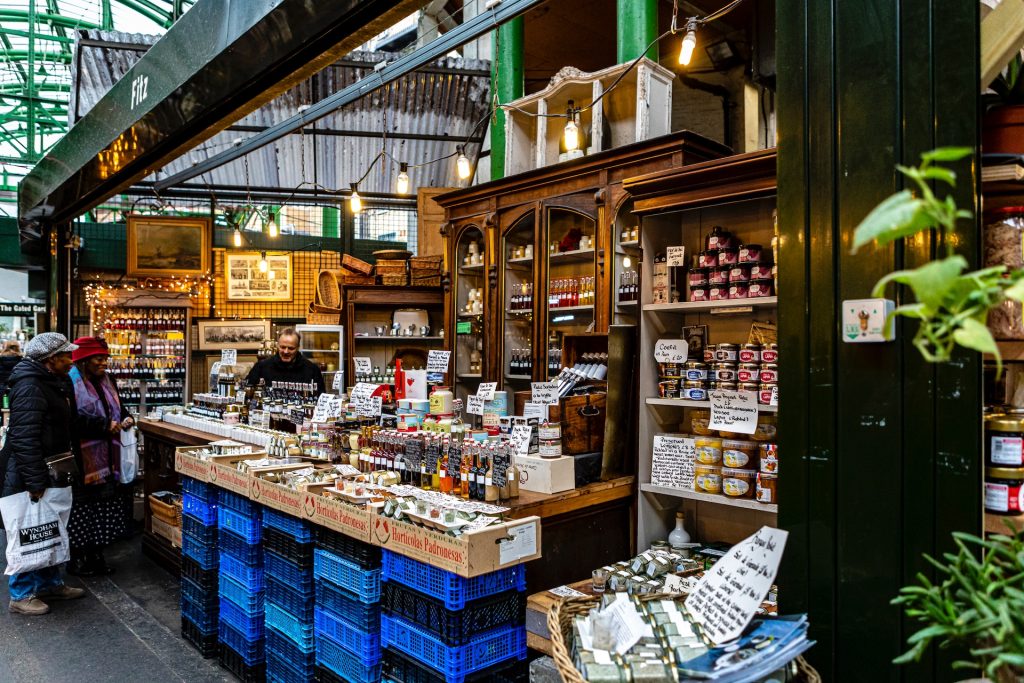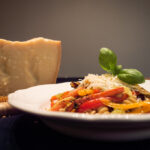The United Kingdom (UK) is a land rich in history, culture, and tradition. As with any country, the food of the UK is a reflection of its cultural tapestry and history. Traditional British dishes, while sometimes underappreciated, are a testament to the nation’s ability to blend flavors, techniques, and ingredients that represent its four distinct countries: England, Scotland, Wales, and Northern Ireland. This article delves into the culinary heart of the UK, exploring the iconic dishes that have come to symbolize its food culture.
- Full English Breakfast:
A hearty way to start the day, the Full English Breakfast is an ensemble of bacon, sausages, eggs, tomatoes, mushrooms, baked beans, black pudding, toast, and sometimes fried potatoes. It’s a meal that provides enough energy to keep you fueled for hours. - Fish and Chips:
Perhaps one of the most iconic dishes, fish and chips is universally loved. Freshly battered fish, often cod or haddock, is deep-fried to golden perfection and served alongside chunky chips (or fries, as they might be known elsewhere). Traditionally, it’s accompanied by mushy peas and tartare sauce, wrapped in newspaper, and sprinkled with salt and vinegar. - Sunday Roast:
The quintessential family meal, the Sunday Roast is an age-old tradition. A roasted meat, typically beef, lamb, chicken, or pork, is served with roast potatoes, Yorkshire pudding, vegetables, and drizzled with gravy. The type of meat often determines the accompanying sauce – for instance, beef pairs with horseradish, while lamb goes beautifully with mint sauce. - Cornish Pasty:
Hailing from Cornwall, this savory pastry is a meal in itself. Traditionally filled with beef, potatoes, swede, and onions, it’s encased in a golden, flaky pastry crust. The pasty was the perfect lunch for Cornish tin miners, easy to carry and hearty enough to sustain them through their long shifts. - Haggis, Neeps, and Tatties:
A Scottish classic, haggis is a savory pudding made from sheep’s heart, liver, and lungs, minced with onion, oatmeal, spices, and stock. Traditionally encased in the sheep’s stomach, it’s served alongside mashed turnips (neeps) and potatoes (tatties) – a true tribute to Scotland’s rustic food heritage. - Welsh Cawl:
A hearty stew originating from Wales, cawl typically contains lamb and leeks, simmered until tender. Vegetables like potatoes, carrots, and swede often join the mix, creating a warming and filling dish especially beloved in the colder months. - Bangers and Mash:
A simple yet satisfying dish, “bangers” refers to sausages, while “mash” is mashed potatoes. When paired together and covered with onion gravy, they become the ultimate comfort food. - Black Pudding:
Often featured in the Full English Breakfast, black pudding is a type of blood sausage made with pork blood, fat, and oatmeal. Though it may sound daunting to the uninitiated, its rich flavor and unique texture make it a favorite for many. - Shepherd’s Pie and Cottage Pie:
Both are baked dishes made of minced meat covered with a crust of mashed potato. While Shepherd’s Pie uses lamb, Cottage Pie is made with beef. They are the epitome of homely British comfort food. - Cream Teas:
A delightful British custom, cream teas consist of scones served with clotted cream and strawberry jam. Paired with a pot of freshly brewed tea, it’s a staple in afternoon tea traditions. - Trifle:
A decadent dessert, trifle layers sponge cake soaked in sherry or wine, fruit, custard, and whipped cream. It’s often garnished with almonds or cherries and sometimes includes jelly. - Sticky Toffee Pudding:
This is a rich, moist cake made with dates, covered in a luscious toffee sauce. It’s commonly served with vanilla ice cream or custard and is the perfect end to any meal.
The UK’s culinary history is a melting pot of flavors, ingredients, and techniques. While modern British cuisine continues to evolve, integrating global influences and contemporary methods, the traditional dishes remain a beloved and integral part of its identity. From hearty stews to indulgent desserts, the food of the UK tells a story of its people, its landscape, and its history. Whether you’re tasting these dishes in a historic pub, a bustling city eatery, or making them at home, you’re partaking in a rich and flavorful tradition that spans centuries.
The world is ever-evolving, and so is the culinary landscape. With the UK being a global hub, its food culture has been deeply influenced by international cuisines. However, the charm and significance of traditional British dishes remain undiminished. Here’s why these traditional dishes are still relevant in today’s culinary context:
- Comfort and Nostalgia:
For many in the UK, dishes like bangers and mash, shepherd’s pie, or the Sunday roast evoke memories of family gatherings, childhood meals, and special occasions. These foods provide comfort and a connection to one’s roots. - Regional Pride:
Local ingredients and methods of preparation make each traditional dish unique to its region. The Cornish pasty or the Scottish haggis are not just recipes; they’re reflections of the local culture, history, and landscape. Preserving these dishes is a way of keeping regional identities alive. - Culinary Tourism:
Many travelers are keen to experience the authentic flavors of a destination. Traditional British dishes, served in age-old pubs or rustic eateries, offer an authentic taste of Britain’s rich culinary heritage. - Modern Twists:
Contemporary chefs often draw inspiration from classic dishes, adding their unique twists. For instance, traditional fish and chips might be reimagined with exotic spices or alternative fish varieties. This innovative approach ensures that traditional dishes continue to evolve while maintaining their core essence. - Sustainable Eating:
Many traditional British dishes were born out of the need to use every part of an ingredient, ensuring minimal waste. In an age where sustainability is increasingly crucial, these dishes provide a lesson in making the most of available resources. - Celebration of Seasonal Ingredients:
The UK boasts diverse produce across its seasons. Traditional dishes often highlight these seasonal ingredients, celebrating their peak flavors. From spring lamb to autumnal berries, these dishes are a testament to the bounty of the British landscape. - Education and Legacy:
By cooking, sharing, and celebrating traditional dishes, the older generation educates the younger ones about their heritage. This transfer of knowledge ensures that these culinary traditions are carried forward.
The food of the UK, steeped in tradition, tells tales of its past, reflects the spirit of its present, and offers a glimpse into its future. As the world becomes increasingly globalized, there’s a renewed interest in rediscovering and celebrating these culinary gems. Whether enjoyed in their classic form or reimagined with modern twists, traditional British dishes stand as a testament to the enduring and evolving nature of UK’s rich culinary tapestry. Through its food, the UK invites everyone to partake in its stories, traditions, and flavors – a culinary journey that resonates with both the heart and the palate.














